You take a lot of pride in the overall aesthetics of your lawn. You may even feel like you’re doing everything you should and yet your grass is turning brown despite watering and other ongoing care.
That can be a major source of frustration. After all, nobody likes to see brown grass patches popping up throughout their lawn.
Even if your grass looked great in the spring, it may have started to decline come summer. This is quite common as there are many factors that can cause summer lawn stress. Understanding what issues are involved and how you might be able to prevent some of them with the proper summer lawn care schedule will help protect your grass.
Summer can throw a lot at your lawn. Let’s look at some of the most common reasons why your lawn is turning brown in the summer.
Lawn Diseases To Watch Out For
If your grass is turning brown despite watering, it’s possible that you may have a problem with disease, caused by microscopic living organisms. These include bacteria, fungi, and nematodes, among others.
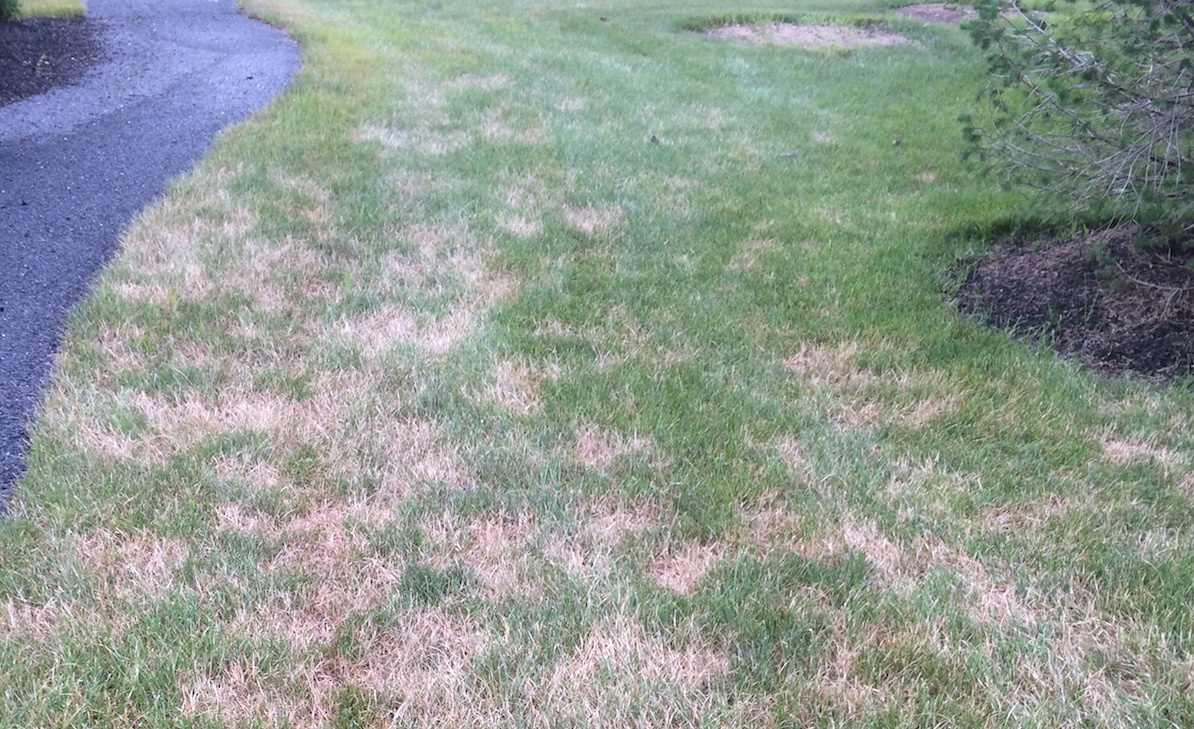
In most cases, summer lawn diseases are caused by fungi. There are a wide variety of fungal diseases that may be inflicting your lawn. Some of the most common, include the following:
Brown Patch
If you have brown grass patches, it may be the result of a moisture-loving fungus called Rhizoctonia Solani, or more commonly “brown patch.” Brown patch may start out small but it can spread rapidly.
Dollar Spot
Dollar spot gets its name as a result of the appearance of greenish/yellow or straw-colored lesions that are about the size of a silver dollar. A brown border typically surrounds the lesion. These spots may start out small but can reach 2 to 4 inches in diameter and even begin to run together, producing large areas of dead turf.

Fusarium Patch
This disease is most noticeable during prolonged hot and dry periods of the summer. It appears as small, circular, gray/green areas ranging from a few inches up to a foot in diameter.
Pythium Blight
This disease first appears as small, irregularly shaped spots ranging from a half-inch to 4 inches in diameter. Initial symptoms also include water-soaked leaves and stems. The infected turf areas also become matted. It has been known to spread very quickly during periods of high humidity.
Red Thread
This fungal disease produces reddish-pink thread-like fungal structures that form spots on lawns. It is a common cause of lawn problem toward the end of spring, when grass is nitrogen deficient and rapidly growing..jpg?width=1200&height=900&name=Red%20Thread%20Lawn%20Disease%203%20(1).jpg)
What to Do About Lawn Disease
Treating disease all starts with a professional inspection in order to determine the best course of action. In some cases, fungicides may be needed. However, it’s possible that cultural practices such as removing thatch or performing seeding can be enough to do the trick. A professional can help educate you on the options you have available and guide you toward the best course of action. Oftentimes it can differ from lawn to lawn. Everything from your specific site conditions to your budget may all come into play.
Lawn Insects To Watch Out For
A pest problem can also cause brown grass in summer. In fact, there are quite a few different pests that cause summer lawn stress. Some of the most common ones include the following:
Grubs
The larval stage of Japanese Beetles, and several other related species are called grubs and they are found beneath the surface of your lawn where they feed on its roots. An infestation of grubs can be highly destructive.
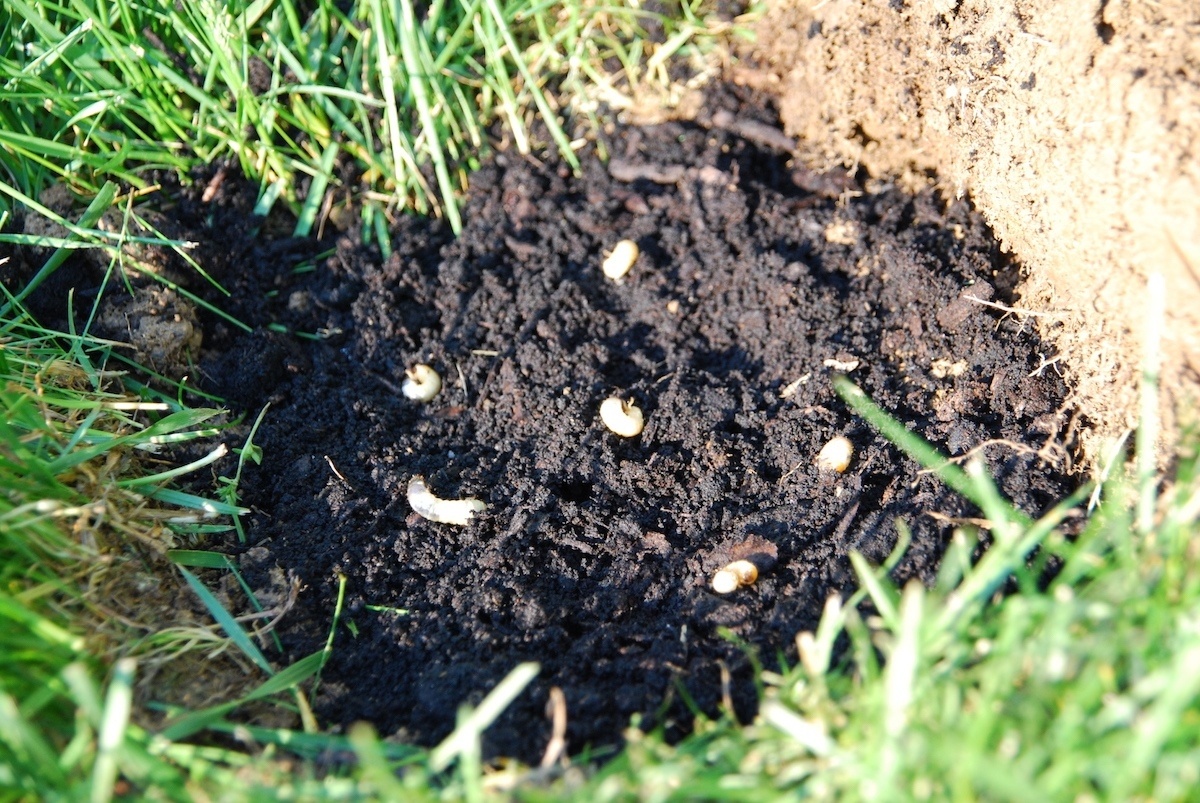 However, applying a preventative grub control treatment each year can help ensure season-long control. Should you already be dealing with a grub problem, then you’ll need to implement a curative treatment product. In a worst-case scenario, if significant damage is already done, it may need to be addressed with seeding to restore the bare patches.
However, applying a preventative grub control treatment each year can help ensure season-long control. Should you already be dealing with a grub problem, then you’ll need to implement a curative treatment product. In a worst-case scenario, if significant damage is already done, it may need to be addressed with seeding to restore the bare patches.
Chinch Bugs
Chinch bugs are tiny pests, found in the thatch layer of your lawn, just above the surface. These lawn pests feed on the grass blades and crown (part connecting to the root) and when found in large numbers, can destroy vast areas of your lawn. Chinch bug damage typically occurs in the prime of the summer when the insects are actively feeding.
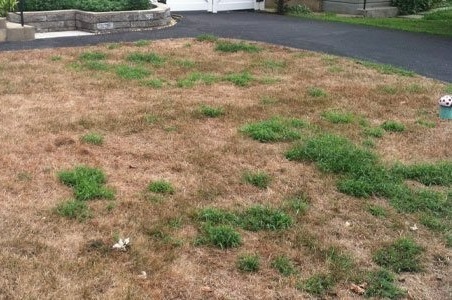 Removing excess thatch and performing lawn aeration to break up compacted soil is one way to remove the favorable environment in which chinch bugs prefer to live. However, if you’re already dealing with an infestation, then your lawn may require a professional product to get the chinch bug population under control.
Removing excess thatch and performing lawn aeration to break up compacted soil is one way to remove the favorable environment in which chinch bugs prefer to live. However, if you’re already dealing with an infestation, then your lawn may require a professional product to get the chinch bug population under control.
Sod Webworms
Also referred to as “lawn moths,” sod webworms are a dull-colored moth that can reach ¾ inch in size. However, it’s the larvae of the adult months that actually feed on the lawn.
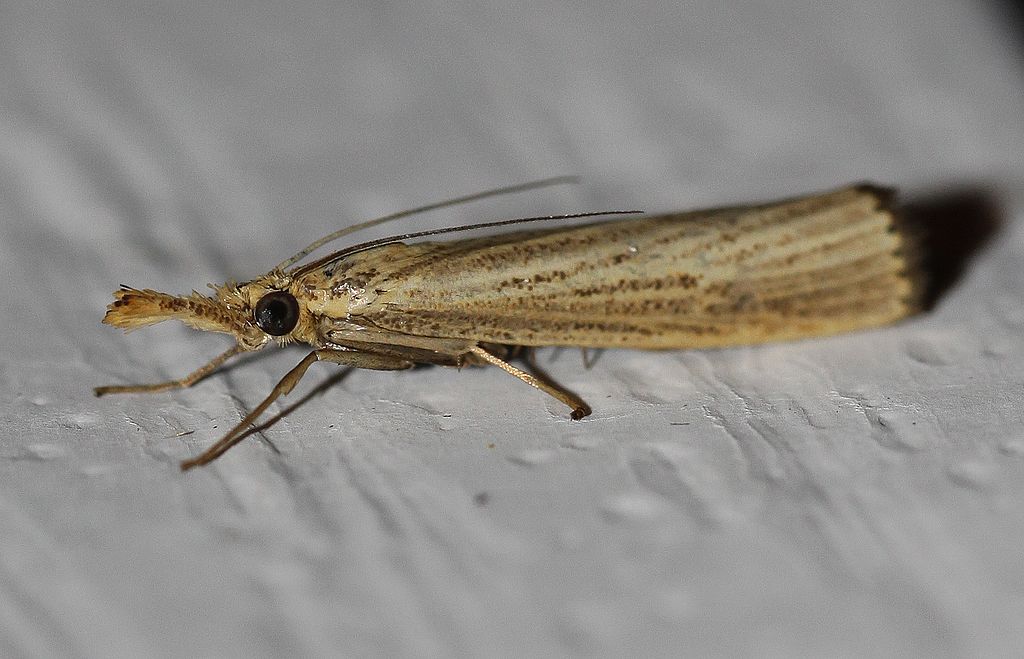
During the day, these lawn pests hide in sheltered areas. Most of their feeding occurs overnight. Damage is typically recognized as brown grass patches as large as a baseball, found around the lawn. In time, it spreads to turn into a large, brown dead area. The worst damage typically occurs in July and August.
If you have an infestation of sod webworms, then you may require a control product to suppress their larval populations while they are actively feeding. Going forward, preventative treatment each year during the time they are likely to feed may prevent future issues.
Summer Lawn Drought Stress
When there are long periods of dry and hot weather, then it’s quite possible that your browning summer lawn may be the result of drought. Grass responds to summer’s high temperatures and lack of water by wilting, browning, and potentially even death.
One way to evaluate whether your browning lawn is the result of drought is to look at the “bounce back” of the grass blades when they’re stepped on. If footprints appear throughout your lawn after you’ve walked on it, then it may very likely be drought stressed. Similarly, you may see mower tracks in your lawn after mowing, and they don’t go away.
You could also do a simple test using a stake or a screwdriver to see how dry your soil is. Push the stake or screwdriver into a brown patch and into a green patch and evaluate how easy it is to penetrate the soil. If it’s easy to push into the green lawn, but not the brown patches, you’re dealing with dry soil that may be related to drought stress. Watering the lawn deeply in the morning hours, 2 to 3 times per week (so that it gets about 2 inches of water each week) will keep lawns green for the most part.
Proper Summer Lawn Fertilization
Fertility plays a huge role in how your lawn performs. Lawns use up nutrients faster than most people realize and it doesn’t take long for your soil to become depleted. If you want your lawn to thrive, four to five fertilizer treatments throughout the year are important to replace depleted nutrients.
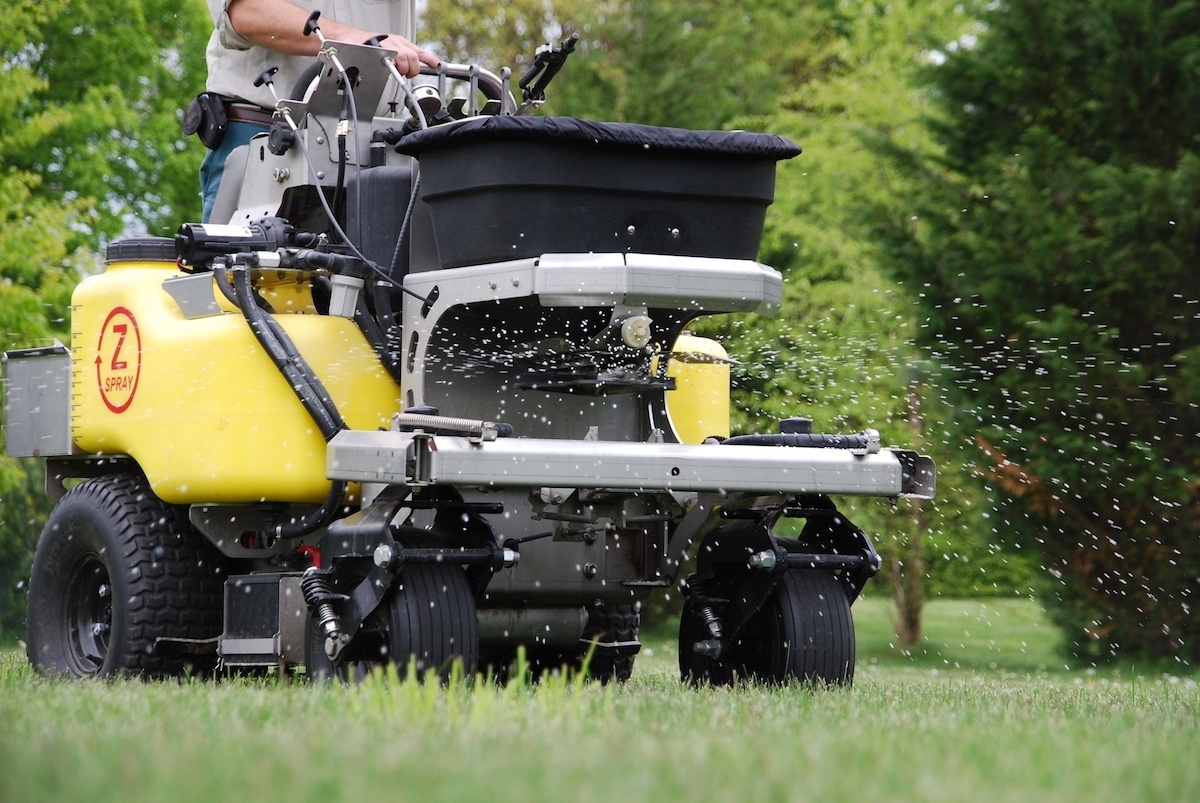
Fertilizer provides your lawn with nitrogen, phosphorus, and potassium, which are referred to as “primary nutrients,” and play an important role in your lawn’s health.
However, the timing is key. While early and late summer are okay for fertilization, there should be a mid-summer break.
Applying summer lawn fertilizer in the worst of summer, when the temperatures have really heated up, can cause problems as it will aggravate most turf diseases, making the issue worse.
At Joshua Tree, we fertilize in the early summer and run that program through mid-July at which point we stop fertilization until early September.
Improper Mowing Practices
Mowing the lawn in summer could be causing your grass to turn brown without you even realizing it. For one, mowing during drought stress can have a negative impact as the grass has limited ability to recover from the cuts you’ve made. If at all possible, try to avoid mowing if you know your lawn is already heavily drought-stressed.
In addition, it’s also important to mow to the proper height. You should mow to only remove ⅓ of a blade at a time and mow one to two times per week, depending on your lawn growth rate.
Mowing too short (under 3 ½”) can cause a lot of unnecessary stress on your summer lawn. Also, aim to maintain a consistent mowing practice so that your grass can retain its strength to defend against stress.
Recommendations for Your Summer Lawn Care Schedule
Proper lawn care throughout the summer can help protect your grass even as temperatures heat up. This includes avoiding some of the common mistakes leading to lawn stresses that we mentioned above.

As part of your summer lawn care schedule, you should be sure that you’re doing the following:
- Practicing Proactive Lawn Care: While many of these issues are not completely preventable, how your lawn handles them will come down to how healthy it is. By being part of a regular lawn care program, you’re already being proactive in preventing your lawn from succumbing to summer lawn stressors. A strong and healthy lawn can better withstand the stresses that will arise during the summer months.
- Proper Watering: If you suspect that your summer lawn problems are a result of drought, you’ll want to be sure that you are watering your lawn properly. How much water your lawn needs is all dependent upon how much moisture is in the soil. Your lawn needs approximately two inches of water each week and if it’s not getting that from rainfall, you’ll need to supplement with irrigation. Be sure to water in the morning hours to reduce evaporation and to also not agitate turf diseases.
- Regular Inspections by a Pro: By having a professional on your lawn on an ongoing basis, they’ll be able to spot problems with insects or diseases early on, before they become a major threat to your lawn’s survival. That means you’ll be able to start treatment early and restore your lawn to good health.
- Proper Summer Mowing: As we mentioned, mowing can also take a toll on summer lawns. Be sure to mow with a sharp blade, mow more often, and only cut off ⅓ of the grass blade at a time to prevent shocking your lawn and causing added stress.
- Fertilize Early: As we mentioned, soil fertility can also affect overall lawn health, however, summer lawn fertilizer should be applied early and then not again until the early fall.
- Aerate and Overseed in Fall: While some summer lawn stress is inevitable and sometimes damage cannot be prevented, by aerating and overseeding in the fall, you’ll be able to repair any lingering damage and continue to thicken your lawn even more.
Choosing a Lawn Care Company to Meet your Needs All Year Long
Whether it’s summer or any other time of year, the overall health of your lawn will come down to the lawn care program you’re using. This means that choosing the right lawn care company will be key in the overall success (or failure) of your lawn.
At Joshua Tree, we offer three lawn care programs so that you can find one that best suits your needs. Regardless of which program you choose, you can have the peace of mind that by having a professional regularly on your property, problems will be caught early and your lawn will be receiving the care it needs to survive summer stress.
If you’d like to find out more about our lawn care programs, which include three lawn care pricing options, then contact us for a free consultation or give us a call at 833-583-8733.
Image Source: Dollar Spot ,sod webworm




